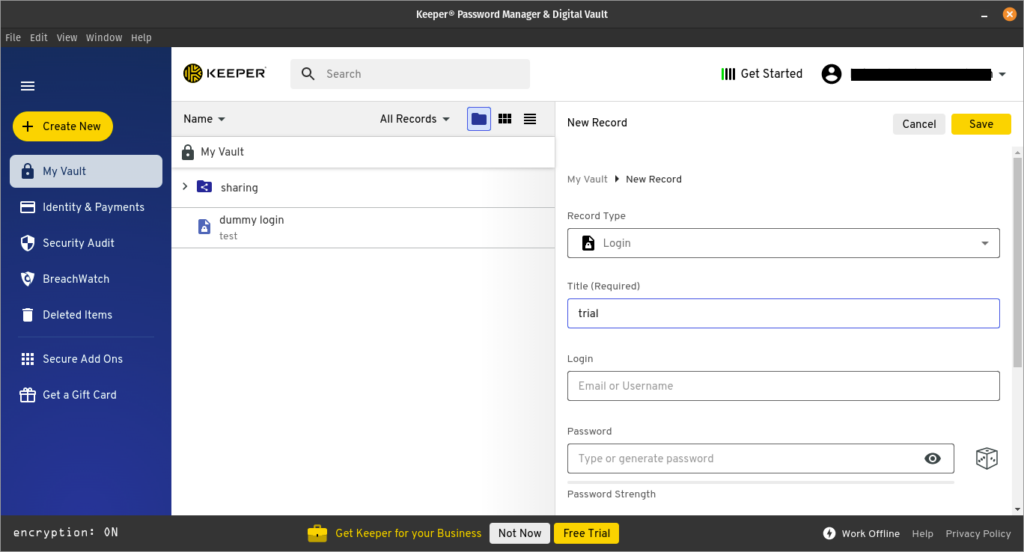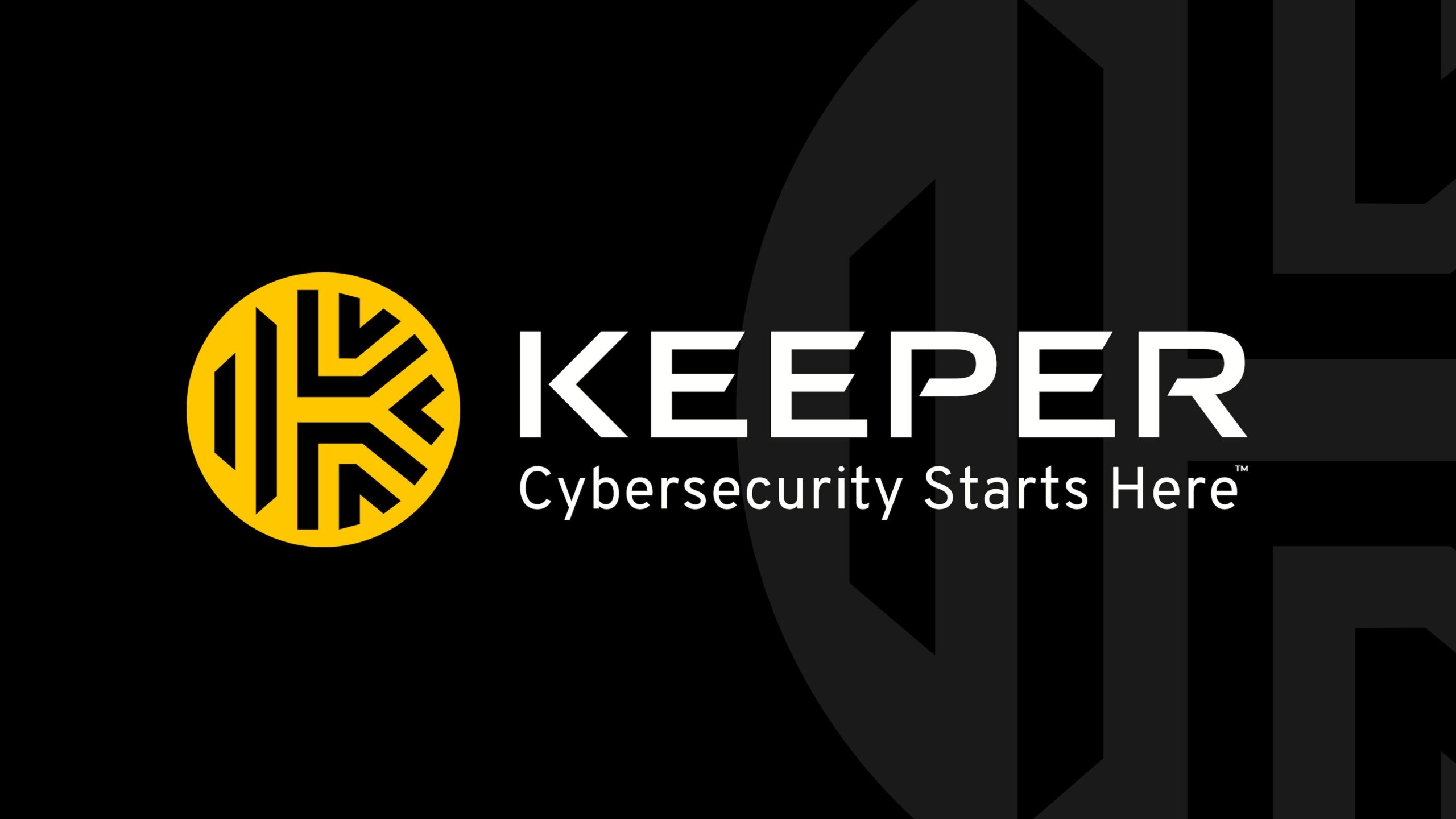Verdict
Keeper is a business-first service that does everything a password manager needs to – but it’s neither as pretty nor as feature-packed as some rivals.
Pros
- Can share passwords with anyone
- In-app TOTP password generation
Cons
- Extremely limited free account
- Tries to up-sell you on storage and breach protection
-
SecurityAES 256-bit encryption and PBKDF2 -
SharingGrant full or limited password or folder access to other Keeper users -
Storage10GB for an additional £6.99 per year; five free file uploads are available for all paid accounts; 10GB shared storage is included in the family subscription
Introduction
Keeper Password Manager is one of the more overtly business-orientated password management services around, but it has solid personal subscription tiers whose pricing compares well to the likes of LastPass and Dashlane.
But is it good enough to qualify for our Best Password Manager roundup? Here are my thoughts.
Pricing
A Keeper Personal account costs £30 per year, while a Family subscription includes five accounts and costs £72 per year. Two- and three-year subscriptions are also available. The Family account includes 10GB of shared encrypted storage, which is normally priced at £6.99 per year, but it’s still rather expensive compared to many rivals.
Keeper provides a range of bolt-on services, including storage and breach monitoring, which you’re encouraged to add to your subscription. While other services provide some storage and monitoring to see if your credentials appear in breacher, these cost extra from Keeper. They’re also automatically added to your basket as suggested purchases when you check out on the site, so keep an eye out for that. There’s also an encrypted chat app, which really is free, but which you’ll probably never persuade all your friends to use instead of WhatsApp.
Keeper Security also offers a wide range of accounts targeting different business needs, which are beyond the scope of this review. However, if your employer or your own business uses Keeper, it’s worth knowing that all users associated with a Keeper Business or Enterprise account get a free five-user Family account.
There is a free version, but it’s very limited. If you have an account or a trial and it ends, the free version is what you’re left with. It supports only a single mobile device, and while it will store an unlimited number of passwords and payment details, and handle TOTP (Time-based One Time Password) two-factor authentication, it won’t sync online to Keeper’s vault, or otherwise back up your passwords, or even autofill them. Needless to say, this free fallback is in no way suitable for a long-term user, although it’s incredibly useful if your subscription lapses by accident.
Features
- Range of two-factor authentication methods
- Dedicated forms to store wide range of information
- Supports biometric sign-ins
Keeper Password Manager’s core subscription is well equipped, but some features are only available as paid-for extras. There’s a good range of browser extensions, mobile apps and desktop clients, all with a consistent interface that, while not as attractive as those of 1Password or NordPass, is clear and easy to use. Desktop clients are available for macOS, Linux and Windows. However, the Windows app is only available via the Microsoft Store, rather than as a stand-alone installer, so you’ll need to be using a signed-in Microsoft account to access it, which may not sit well with privacy enthusiasts and others who still use local-only accounts.
You can use a range of two-factor authentication methods to secure your connection to Keeper, including via text message, TOTP authenticator, RSA SecurID, Duo and KeeperDNA. It also supports in-app TOTP password generation for other services – something that’s increasingly become a must-have feature in top-flight password managers.
Keeper has dedicated forms to store a wide range of information beyond simple passwords, payment cards and addresses, from identity documents and driving licences to Wi-Fi passwords and software licence keys.
There’s a structured account recovery process if you forget your master password. Keeper’s recently upgraded from a verification code and security question system to one that generates a recovery phrase of 24 easy-to-type English words. This has to be configured before the account password is lost, and you’re helpfully prompted to do this during a guided set-up process. There’s also an emergency access system, which lets you designate up to five people as Trusted Users in case anything happens to you, with an optional specified delay between them requesting and being granted access.

As well as transferring entire vaults to other Keeper users, you can grant them full or limited password record or folder access, with either view or edit privileges. Time-limited, one-time record sharing is also available, and doesn’t require the recipient to have a Keeper account.
To help minimise the amount of password filling you have to do, Keeper can authenticate logins to your password vault passwordlessly using biometrics for the mobile app, Windows Hello, and its own Keeper Push service, which sends a login challenge to a linked mobile device.
Keeper has reasonably sensible vault-locking defaults, which can be further configured by the user. You’re logged out of your vault when you close your browser or app, and if you leave the desktop app open and idle for 60 minutes, it’s logged out. Logging into the desktop app requires that you go through a step confirming your user name before entering your password, which is a little bit of extra friction that I’d like to see dispensed with.
Latest deals
Should you buy it?
If you’re looking for convenience: Keeper is easy to use, although I’d like to see features like breach-checking and a bit of storage included at no extra cost.
Final Thoughts
Keeper Security remains a solid password manager, although the consumer version feels like a secondary product compared to the company’s enterprise offerings.
Plus, at this price, there’s really no reason to use it when Bitwarden is much cheaper and 1Password includes a lot of features that are bolt-on extras for Keeper.
I’d be entirely happy using Keeper Security for my day-to-day password management needs, but Bitwarden and the KeePass ecosystem are both significantly less expensive. Check out our Best Password Manager guide for more options.
How we test
We test each password manager ourselves on a variety of computer and mobile operating systems. We carry out comparative feature analysis against industry standards and rival products, and test security and convenience settings such as default logout behaviour and offline access.
We used for at least a week.
Tested all of the available features.
FAQs
Yes, Keeper is perfectly safe to use and uses end-to-end encryption to ensure your data remains private.
A Keeper Personal account costs £30 per year, while a Family subscription includes five accounts and costs £72 per year.
























